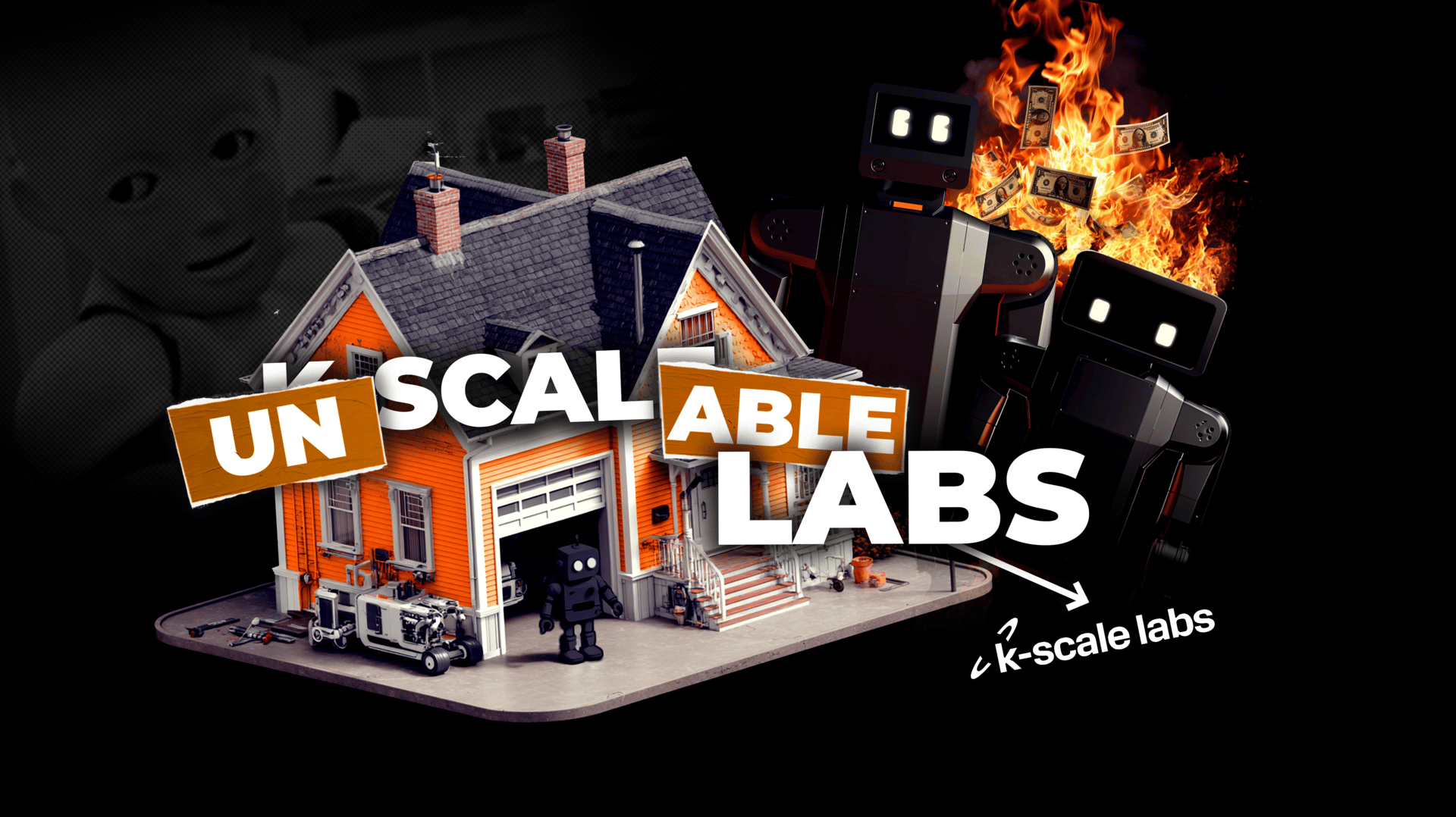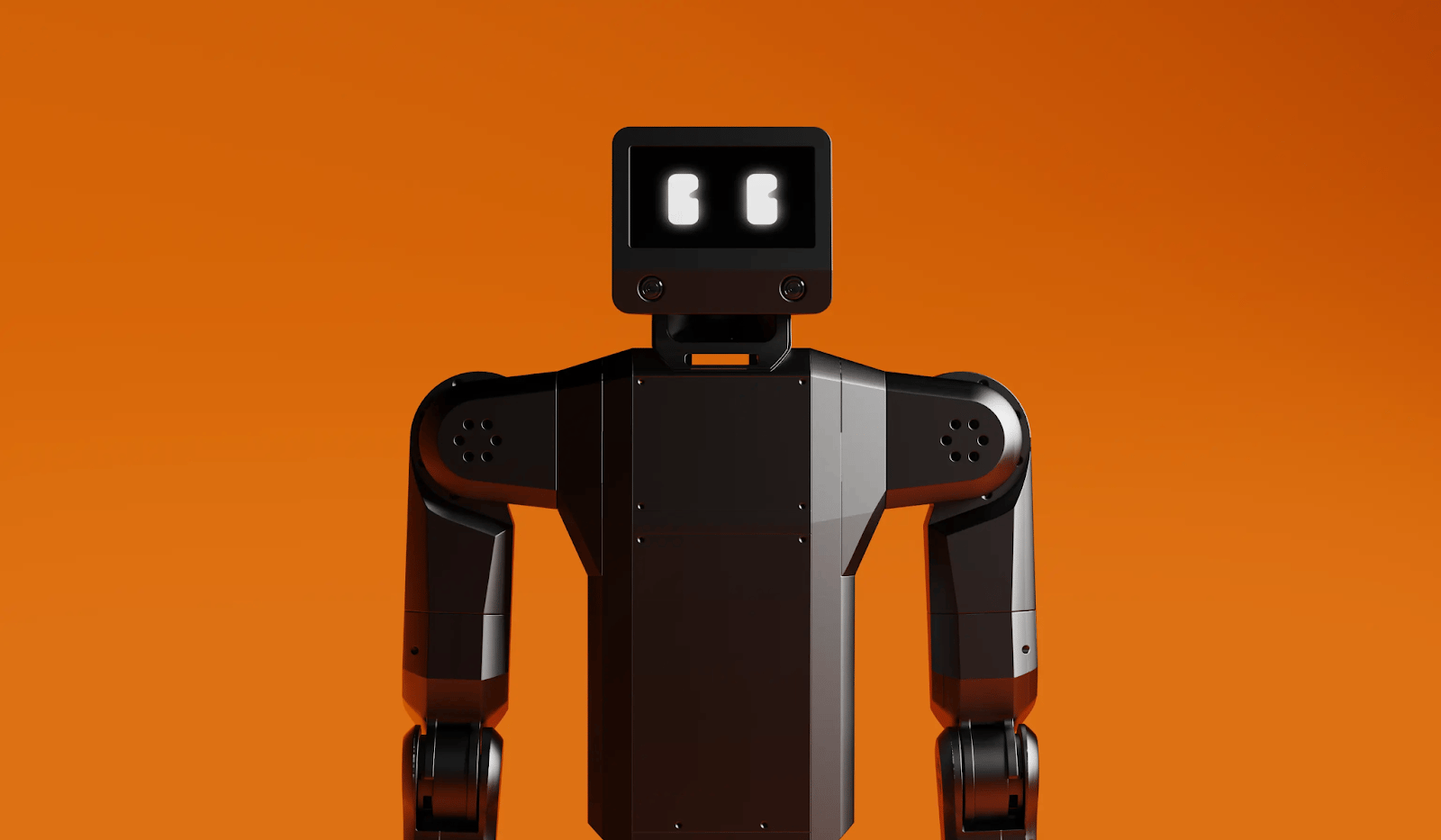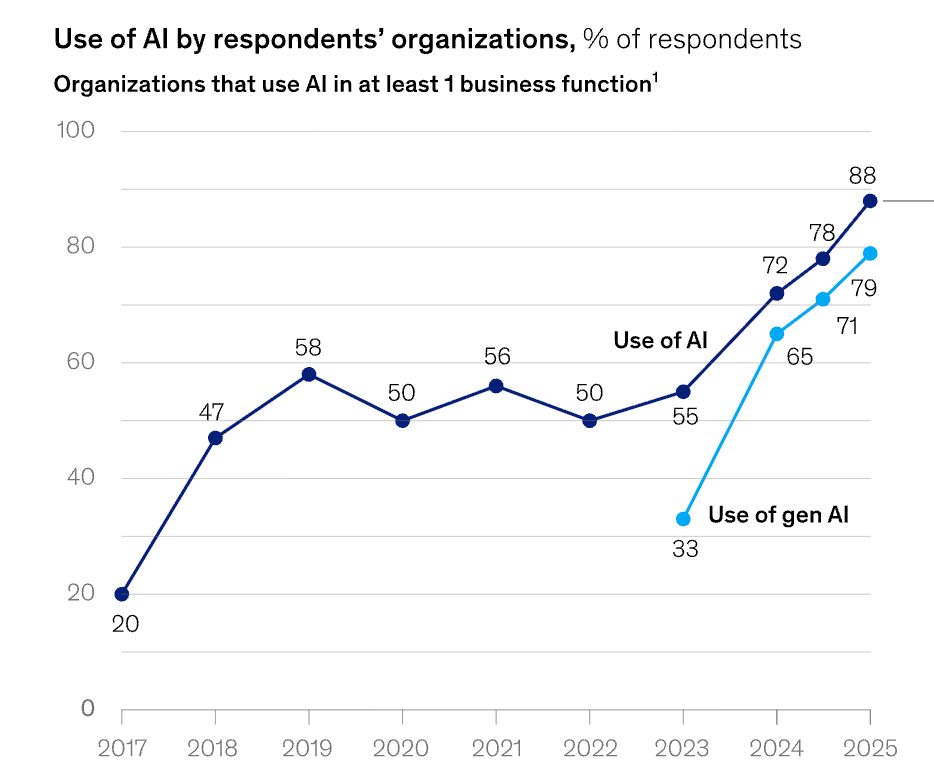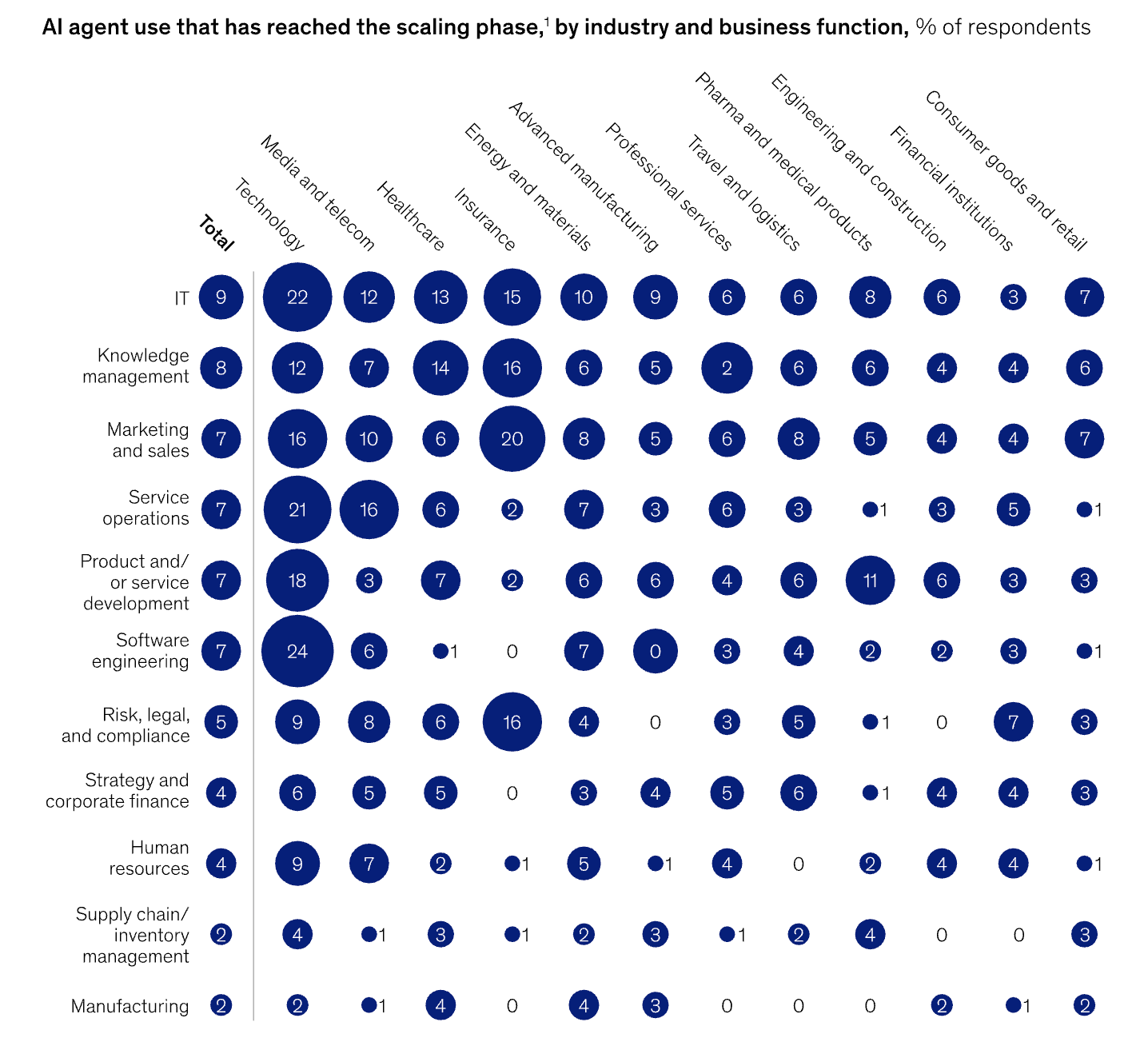- Failory
- Posts
- The Open-Source Robot
The Open-Source Robot
How K-Scale Labs tried to democratize humanoid robots but ran out of runway.
Hey - It’s Nico.
Welcome to another Failory edition. This issue takes 5 minutes to read.
If you only have one, here are the 5 most important things:
K-Scale Labs, a startup building open-source humanoid robots, has shut down — learn why below
Shopify says AI traffic is up 7x since January, AI-driven orders are up 11x.
Voice AI startup Giga raises $61 million to take on customer service automation
Only 6% of big companies are seeing returns from AI adoption — learn why this might be an opportunity below
Online ads are easy to ignore. The best founders know attention comes from the real world too. Today’s sponsor, Delve, just dropped a guide to out-of-home campaigns that actually drive results.

How to run a billboard campaign 101 AD
You’re a fast-growing company ready to scale. You’re thinking big: billboards, airport ads, subway takeovers, all the stuff people can’t scroll past.
Delve just dropped the best guide to planning, building, and launching an out-of-home campaign that turns attention into real leads.
Learn the exact tactics they used to take over San Francisco, New York, and Texas with their viral “Done in Delve” campaign.
If you’re a scrappy startup or a Series B company ready to make noise, this playbook’s got you covered.
Watch the short film and read the guide at www.delve.co/ooh to learn everything you need to launch your first out-of-home campaign.
This Week In Startups
🔗 Resources
The future of the web is the history of YouTube
Cloudways' Black Friday 2025 Offer: 50% off all managed hosting plans + 50 free migrations. Grab it today! *
📰 News
Shopify says AI traffic is up 7x since January, AI-driven orders are up 11x.
Studio Ghibli and other Japanese publishers want OpenAI to stop training on their work
Canva launches its own design model
Amazon sends legal threats to Perplexity over agentic browsing
💸 Fundraising
Industrial AI startup Octonomy raises $20M in seed funding
Inception raises $50 million to build diffusion models for code and text
Voice AI startup Giga raises $61 million to take on customer service automation
Swiss Startup Mimic Robotics raises $16 million to advance physical AI for robots
* sponsored
Fail(St)ory

Robots for Everyone
For a moment, it looked like the humanoid robotics revolution might come from a house near Stanford. K-Scale Labs was the kind of moonshot startup that Silicon Valley still loves to believe in: ten people, one idea, and an open-source humanoid robot walking on two legs.
A year later, it’s over.
What Was K-Scale:
Founded in 2023 by Benjamin Bolte, K-Scale Labs wanted to build a low-cost, open-source humanoid robot, a kind of “Android for the real world.”
The company’s main product, the K-Bot, was priced around $15,000, a fraction of what most humanoid robots cost. Bolte promised accessibility, community, and speed: humanoids for hackers, not just billion-dollar labs.

The vision caught early fire. K-Scale raised $4 million at a $50 million valuation, a strong signal that investors were buying the dream. Engineers from OpenAI, Nvidia, and Amazon reportedly dropped by the house-slash-lab to see the prototypes shuffle around. Bolte seemed convinced the next $10–15 million round would be a breeze.
Then the money didn’t come.
By October 2024, K-Scale’s cash reserves were down to $400,000, barely a month of runway. The company started canceling pre-orders and refunding deposits. The team of ten shrank fast as key engineers bailed for steadier gigs. This week, Bolte sent his final email to investors: the shutdown was official.
The surprising thing was that the product wasn’t vaporware. K-Scale had already started shipping a Founder’s Edition K-Bot, demonstrating they were able to ship things fast. They had over $2 million in pre-orders, proof that someone out there actually wanted these things.
Put me in, coach
— K-Scale Labs (@kscalelabs)
1:43 AM • Oct 4, 2025
Bolte’s final act was pure hacker ethos. In his farewell note, he announced that K-Scale was releasing all of its proprietary IP (both hardware and software) under open licenses. It was a graceful exit for a company that never pretended to be proprietary to begin with. “I hope this work lays the foundation for future hackers and dreamers,” he wrote.
The Numbers:
🤖 Founded: 2023, Palo Alto
💸 Funding: $4M seed round at $50M valuation
🚶♂️ Team size: ~10 employees
🧾 Robot price: ~$15,000 per unit
📦 Pre-orders: $2M+ in deposits
⏳ Cash left at shutdown: ~$400K
Reasons for Failure:
Hardware burn with software expectations: Bolte tried to run a hardware startup like a software one: small, lean, and fast. But robots don’t iterate cheaply. Even at $15,000 a unit, the upfront costs for tooling and manufacturing were massive. Bolte admitted the unit economics “don’t make sense” without large capital to amortize those costs. That’s a death sentence in hardware, where efficiency only appears at scale.
Misread the funding climate: K-Scale’s biggest assumption was that investor enthusiasm for humanoid robots would trickle down from giants like Figure AI and Tesla. It didn’t. The AI hype cycle isn’t the same as a robotics one, and by late 2024, even deep-tech investors were tightening their belts. Bolte’s plan to raise $10–15M right after launch was overconfident.
Product-market mismatch disguised as traction: Those $2M in pre-orders looked good on paper—but the early buyers were mostly hobbyists and labs, not sustainable customers. The market for humanoids at $15K is still niche, more curiosity than commerce. K-Scale mistook enthusiasm for validation.
Why It Matters:
Hardware dreams need brutal math. You can’t “lean startup” your way through tooling and certification, capital efficiency in robotics still means deep pockets.
Open source isn’t a business model. It builds community, not margin, and once K-Scale gave away its IP, the only thing left was execution—and execution needs cash.
Trend

Too Much AI, Not Enough ROI
McKinsey released its annual State of AI 2025 report this week. Normally, that would be your cue to close the tab. But buried under the corporate gloss, there’s actually some signal worth hearing.
Think of it as field notes from the slowest players in the game (big companies) trying to figure out AI while the rest of us move faster.
Why It Matters:
Everyone’s “doing AI,” almost no one’s profiting from it. That gap means opportunity.
The 6% Club (the few who get real returns) treat AI as product, not project. They rebuild workflows, not just wrap them in LLM wrappers.
Their pain points are your roadmap. Where big companies choke on complexity, startups can build tools that cut through it.
The Big Picture:
McKinsey’s survey claims 88% of companies use AI in at least one function. Sounds like mass adoption, until you realize most of it is still pilot projects. Nearly two-thirds haven’t scaled beyond experiments.

Translation: the corporate world has a lot of AI slide decks and very few working systems.
The irony is rich. After two years of “AI is eating the world,” the world’s biggest organizations are still trying to feed it spreadsheets. The report shows 39% of companies say AI has any effect on profits, and most of those admit it’s negligible. The “enterprise AI revolution” looks more like a very expensive set of demos.
The only places AI is actually driving revenue right now (marketing, sales, and product development) are the same ones that have been automating for decades. AI’s still more of a marketing intern than a CEO.
And yet, the interest in AI agents is through the roof. Sixty-two percent of respondents say they’re experimenting with them. The keyword there is experimenting. The same survey shows that only about 10% have scaled agents in any given business function. So we’re still in the “proof of concept” era.

But this is where things get interesting: in that mess of partial adoption, a few companies (6%, to be exact) are quietly making real money.
The 6% Club:
McKinsey calls them “AI high performers.” Ignore the buzzword. What they’ve figured out is painfully simple: AI pays off when it changes how the work gets done.
They build feedback loops between humans and models. This is the “human in the loop” thing—but stripped of jargon, it just means they define where a person needs to step in. They don’t trust the model blindly, and they don’t waste humans on things the model can handle.
They invest in real tech infrastructure. Most companies still duct-tape AI pilots onto legacy systems. High performers modernize their stack first: clean data pipelines, scalable architecture, versioned models. It’s not sexy, but it’s the foundation of every working AI business.
They have an actual AI roadmap. That means someone decided which use cases matter, how they connect, and what success looks like. Everyone else is still running disconnected pilots with no clear outcome.
What This Means for Builders:
The most interesting part of this report isn’t how advanced AI has become, it’s how badly large companies are implementing it. They have the budget, data, and brand power, yet they can’t turn experiments into products. The report confirms a few big truths:
AI deployment is still a systems problem, not a model problem. Everyone has access to the same LLMs, what’s missing is the infrastructure and glue that make them work in real workflows.
Human feedback is the bottleneck. Everyone talks about “human in the loop,” but no one has built the perfect system for managing that at scale. That’s a product opportunity.
Enterprise AI adoption is fragile. Big orgs struggle to connect models with real business value because they lack the connective tissue: data hygiene, versioning, governance.
For founders, this means there is a market for solving the boring but crucial operational pain that keeps AI from working in practice. Some obvious startup ideas that pop from this data:
Tools for AI deployment orchestration: how to get from prototype to production without breaking compliance or pipelines.
Lightweight “human feedback management” systems: ways to collect, review, and use human validation without slowing everything down.
Infrastructure that tracks AI ROI per workflow: basically analytics for whether a model is actually earning its keep.
If McKinsey’s data shows anything, it’s that the enterprise world is still waiting for its “Stripe moment” for AI—something that makes complex adoption simple.
Help Me Improve Failory
How useful did you find today’s newsletter?Your feedback helps me make future issues more relevant and valuable. |
That's all for today’s edition.
Cheers,
Nico